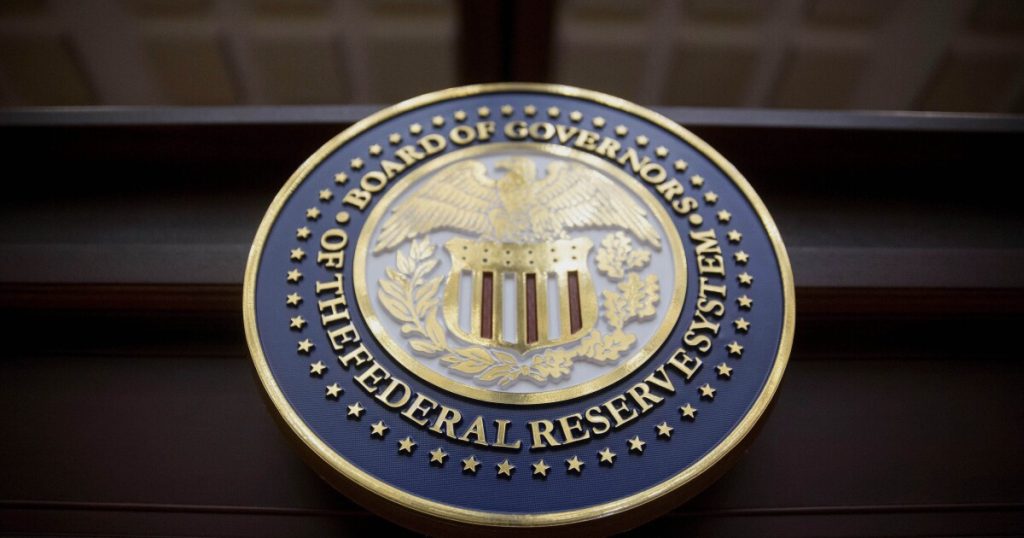Andrew Harrer/Bloomberg
The Federal Reserve recently did
For two years, the Fed had walled off
Increased liquidity is the first effect. Collateral is the hinge of modern banking, turning assets into funding. A world in which crypto can be pledged in secured lending is a world in which crypto becomes money-adjacent. A crypto-collateralized loan no longer sits in a gray zone of regulatory suspicion. Instead, it is folded into the same playbook that governs securities lending, repo and discount-window operations. Banks will be able to finance crypto exposures with short-term borrowing, netting liquidity against digital assets just as they do with Treasuries or agency MBS. That changes crypto from a deadweight speculative bet into a liquidity-generating instrument.
The repo market is the next frontier. Today’s repo system thrives on high-quality liquid assets, or HQLA; Treasuries above all, but also select agency and corporate securities. Crypto has always been shut out, not just because of volatility but because supervisors did not bless its role as collateral. With the Fed’s signal, the barriers thin. Banks can begin building bilateral and triparty repo structures around tokenized assets. That does not mean bitcoin instantly becomes HQLA, but it means that private counterparties can use it in secured lending without fearing supervisory wrath. In practice, this is how new collateral classes are born: first bilateral, then standardized, then systemic. The Fed just opened the door.
For financial stability, the implications are double-edged. On one hand, folding crypto into the collateral pool reduces systemic opacity. The shadow world of crypto lending — exchanges offering leverage, hedge funds pledging tokens in offshore arrangements — was precisely what imploded in 2022. Bringing those practices inside the banking perimeter, subject to standard collateral haircuts, margining, and daily mark-to-market, stabilizes the system. It channels crypto lending into frameworks banks already use to contain risk. This is how risky assets get domesticated: not by prohibition, but by haircut.
On the other hand, eligibility creates feedback loops. Once crypto can be repoed, liquidity crises in digital assets become liquidity crises in the banking system. Volatility in bitcoin prices will not stay quarantined; it will ripple through collateral valuations, repo haircuts and bank funding. The very step that legitimizes crypto also integrates its swings into the broader credit system. This is not a bug; it is the price of financial modernity. But it does mean that the next crypto crash will no longer be confined to Coinbase and Binance. It will show up in repo spreads.
Risk management, therefore, becomes critical. Treating crypto as collateral does not mean treating it as safe. The supervisory shift implies that banks can use existing frameworks: value-at-risk models, stress scenarios, margin calls, overcollateralization. These tools already handle volatile collateral, like equities in prime brokerage, or emerging-market bonds in secured lending. Crypto will slot in, perhaps with more conservative haircuts, but under the same discipline. For the first time, banks can build structured, risk-weighted products around crypto exposures without feeling they are sneaking them past regulators. In practice, that means more transparency, not less.
And there is a macro point. The U.S. has just taken a step toward weaponizing crypto for dollar liquidity. If crypto assets can be mobilized in repo, then they can indirectly support dollar funding markets. That is not trivial in a world where sovereign debt markets are strained by deficits and where global demand for collateralized dollars remains insatiable. Bitcoin as dollar collateral is not just a financial experiment, it is a geopolitical tool.
The Fed’s decision also shifts the global competitive landscape. Europe’s approach, crystallized in
To put it bluntly: Crypto just got its green card. It is no longer the outsider sleeping on the couch of American finance; it has a Social Security number, a job and the right to pledge itself for a loan. The implications for liquidity, repo and systemic stability are not yet fully appreciated. But when the next financial stress hits, don’t be surprised if the asset keeping dollars circulating isn’t a Treasury bill, but a bitcoin on repo.
The Fed has baptized crypto not by blessing it as money, but by recognizing it as collateral. And in modern finance, collateral is power. Crypto, it appears, has just joined the club.

